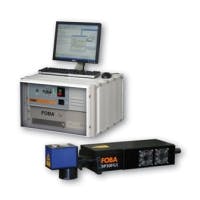Daventry, Northants, UK – Lasers have proven to be an indispensible tool in the fight against forgery. The ability of the laser to produce consistent and accurate micron sized holes in unique patterns provides enhanced protection against forgery in official documents such as passports.
Although a passport contains many complex security features, including: bio-data, watermarks, hologram images and security details visible only under certain lighting conditions, the laser provides yet another level of protection.
Many new passports now also contain a series of laser drilled holes, used to reproduce the passport number adjacent to the printed text and also drill a precise series of holes through a number of sequential pages. The latter feature makes it almost impossible for a passport document that has been modified or tampered with – by removing or inserting pages – to pass as an original document because the holes on the various pages could never be re-aligned to the original precision created by the laser.
Large sporting events such as World Cup Championships and the forthcoming London Olympics draw very large crowds, subsequently placing a heavy burden of responsibility for safety and security on the organizers. At all major events of this type, security measures for officials, competitors, high profile guests, and employees have to be strict to ensure that only persons holding valid access passes are able to enter the venue or gain access to certain restricted areas.
As a leader in providing laser solutions for passport, event ticketing and ID card perforation, Rofin has been involved in many high profile events in recent years, and their engineers work closely with the company chosen to produce the tickets and passes for a specific event, to define a pattern of perforations, some of which would be easily visible to the eye and some which would be much more difficult to detect. These perforations significantly increase the security features of the item, as only the event security staff would know of the presence and precise location of these very small holes, making official passes and tickets more difficult to counterfeit.
The perforation pattern generated by Rofin Lasers for a Championship Football Tournament was in the form of a football, with additional perforation holes and lines in the area of the pass that incorporated the owner's photograph. The laser perforations in this area made it impossible to remove the original picture without damaging the parent material. A three axis galvo head was used to cover the 300 mm x 300 mm working area required for two passes. Even with this large working envelope, the laser produced perforated holes as small as 200 microns, and completed the perforation process for two tickets in just 1 second.
Generating holes plays a significant part in enhancing safety and security at our borders and at major public events.
For more information, e-mail [email protected]
Similar stories:
